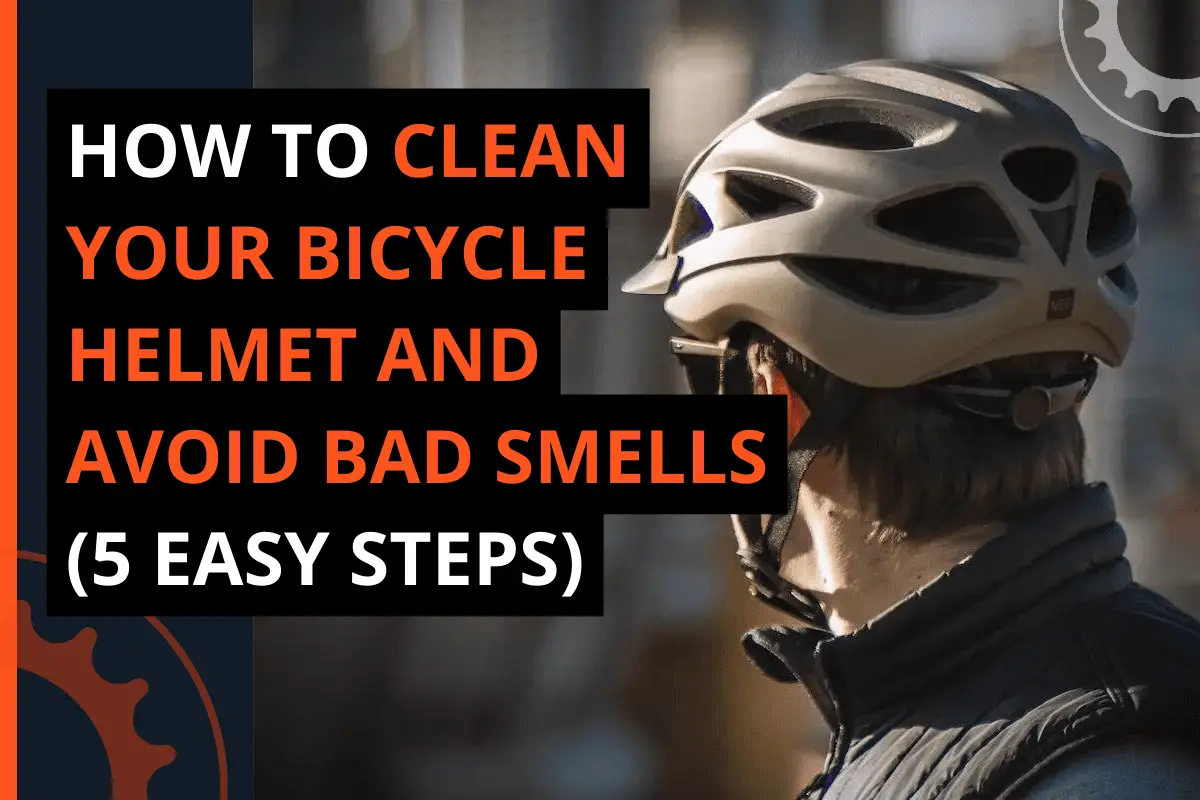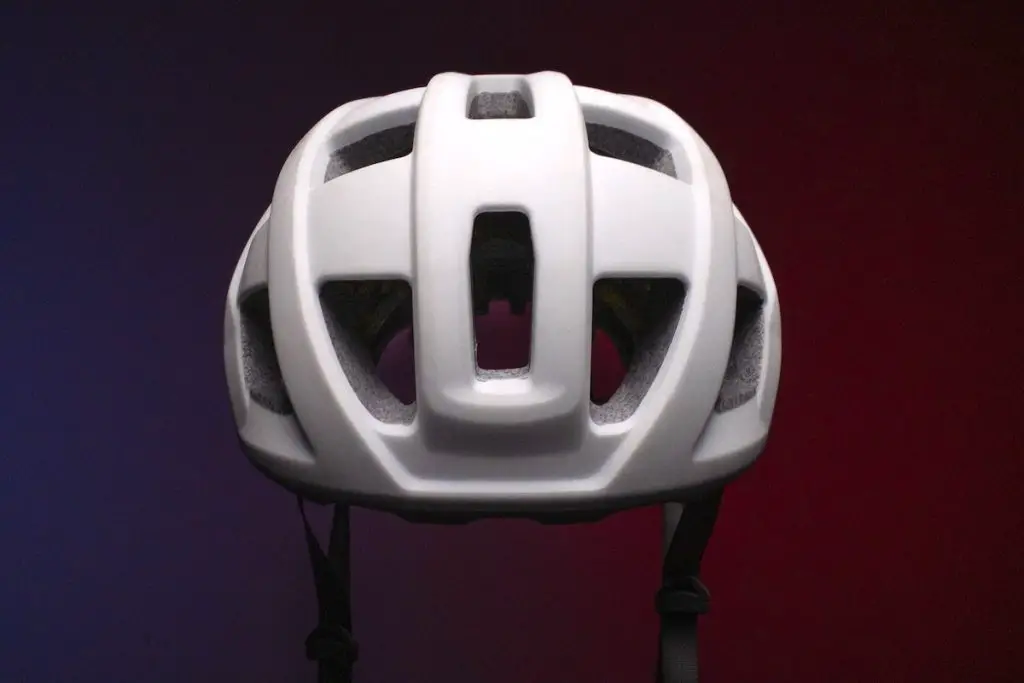A bike helmet is one of the most important items you can own. But they must be cared for to last as long as possible. But how do you properly care for and clean a bicycle helmet?
In this article, you will learn why you should clean your helmet. Know if your helmet needs cleaning and how to clean it the right way so it stays in good condition and can be used for many years.
To clean your bike helmet, remove the inner padding and sealant. Use a soft toothbrush to brush all the fabric surfaces and get into the ventilation slots and under the chin strap. Next, clean the outer shell with a damp towel and let everything dry thoroughly to avoid mildew.
Why should you clean your helmet?
You should make a habit of cleaning your helmet. Excess dirt, dust, and chemicals (sunscreen, for example) on the helmet will cause corrosion over time. In addition, the EPS liner (the foam layer that makes up most of the helmet) is extremely vulnerable to damage. It is typically only protected by the outer polycarbonate (plastic) shell.

Cleaning your bicycle helmet regularly will extend its lifespan and ensure that it continues to protect your head for as long as possible.

State Bicycle Co. Black Label 6061

State Bicycle Co. Black Label 6061
How do you know if your helmet needs cleaning?
If your helmet feels greasy and sticky when you wear it, it’s probably time to clean it. Bicycle helmets should be checked and cleaned at least every three months or when they start to smell bad. This is important because dirt, sweat, hair, and other debris can build up on the inside of a helmet and cause it to release an unpleasant odor. So, if you notice that your bike helmet smells foul even after regular cleaning, then it may be time for a new one!
If you are in the market for a new bicycle helmet, check out some popular helmets below. These are great reviews. Also, check out our post where we cover the ten best helmets this year.
[azonpress template=”grid” asin=”B07XFCPTKZ,B0964HGPTR,B0997XH3GY”]
How to clean your bike helmet?
Cleaning the helmet does not have to be difficult. Most helmets are designed to get wet and should be strong enough to withstand a fair amount of force, so you can clean them without fear of it breaking.
Remove the padding or inner liners
The inside of a helmet should be the first thing to be cleaned. This is because the pads inside a helmet absorb the cyclist’s sweat on every ride.
Carefully remove any liners and padding first. it’s okay if it gets wet, so give it a quick rinse with fresh water.
Use a soft wipe or sponge on your padding
Hand washing your helmet pads in cold water with mild soap is recommended. You can put them in the washing machine (cold temperature, gentle cycle), but they may get damaged. Never put pads in the dryer! Allow them to air dry instead. If they have disintegrated significantly, consider replacing them for a better fit.
To remove any dirt or chemicals from the inside of the helmet, use a damp cloth with mild soap. Working around the liner will be easier if the inner liner can be removed. The plastic retention system at the back of the helmet will most likely need to be cleaned. Ensure you wipe it down.
Don’t use chemical cleaners that could react with plastic or foam. Some chemicals may degrade the helmet’s quality. Dishwashing detergent and soapy water are excellent cleaning agents.Clean the outer shell
Clean the outer plastic shell of the helmet with a soft, damp wipe or sponge. Keep it clean inside and around the vents, as well as around the edges of the helmet and the visor (if applicable).
Use a soft brush on the foam or outer plastic to avoid leaving scrapes or scratches. If a soft brush does not remove the grime, use a mild soap with warm water, such as dishwashing detergent or washing powder. If it doesn’t work, use a stiffer bristle brush to eliminate that pesky mud!
Do not hose down the helmet. A high-pressure hose could cause some damage. Furthermore, the inner layers and fitting systems may not appreciate being blasted by a hose! Instead, use a wipe or cloth to thoroughly clean everything.
Inspect the helmet
Helmets do not last forever. Therefore, you should inspect yours regularly. If it has a large crack, dent, or cut, don’t try to save money by not purchasing a new helmet. Dents reduce energy absorption. Thus, the helmet protects you significantly less if you crash.
When you clean your helmet, give it a thorough look to find even the smallest signs of wear.
If you see multiple small dents, it is time to replace your bicyclethe helmet, especially if you have no idea how, when, or what happened to it. Because you can only see the surface, the interior structure may be weakened, and a defective helmet can do more harm than good.Dry every part of the helmet thoroughly
When you’re finished cleaning, make sure to dry everything! Allow it to air dry for an hour or two, and do not store it until it is completely dry!
Keep your helmet in a dry place away from direct sunlight. Avoid extreme heat, such as being inside a car on a hot day. Excessive heat might damage or disintegrate the liner or shell. Also, stay away from chemicals. Petroleum and petroleum chemicals, cleaning agents, paints, glues, and other similar things can damage.
Can you put your helmet in the washing machine?
Not the whole helmet, just the pads, and liner. If you put your entire helmet in the washing machine, it can damage both the helmet and the washing machine. As a result, we strongly advise you to clean the outer shell by hand.
To clean a removable helmet liner and padding. Place these parts in a washing bag and wash them in the “gentle” or “hand-wash” setting. You can use a light detergent. An antimicrobial detergent will help eliminate the smell. Also, never put your pads in the dryer. Let them air dry.
Can chemicals damage a helmet?
Some chemicals can damage your helmet. Water-based cleansers, such as dishwashing soap or shampoo, will not harm your helmet even if used liberally and for long periods. However, petroleum-based solvent cleansers can damage your helmet because they react with the EPS foam, which is used to make the thick main section of the helmet and should not be used.
How do you keep your bicycle helmet from smelling?
If your helmet order persists, try using white vinegar. White vinegar is a good method for eliminating odors from the helmet. Make a 1:10 solution of white vinegar and water and use it to clean the helmet. The vinegar smell will linger for a few hours after washing, but it will disappear. Make sure it’s completely dry!
How do you dry a helmet?
Place the helmet in a dry, non-humid location with good ventilation and air circulation. Allow it to dry naturally. This could take a few days. Do not place it near a radiator or on a boiler.
If you want even more tips, watch this video called How To Clean Your Bike Helmet from the Global Cycling Network YouTube Channel.
Frequently asked questions (FAQ)
Do you still have questions? Below are some of the most commonly asked questions about bicycle helmet maintenance.
What is the best way to clean a bicycle helmet?
To clean your bike helmet, remove the inner padding and sealant. Use a soft toothbrush, brush all the fabric surfaces, and get into the ventilation slots and under the chin strap. Clean the outer shell with a damp towel and let everything dry thoroughly to avoid bacteria.
You can put the pads in the washing machine (cold temperature, gentle cycle). This is the easiest way to clean them, but they may get damaged. Also, never put pads in the dryer! Allow them to air dry instead.
How do you clean a dirty helmet?
Clean the helmet’s outside plastic shell with a soft, wet wipe or sponge. Keep it clean inside and around the vents, as well as around the helmet’s and visor’s edges (if applicable). To avoid leaving scrapes or scratches on the foam or outer plastic, use a soft brush. If that doesn’t work, use a harsher bristle brush to get rid of the mud!
Do not hose the helmet down. A high-pressure hose may do some harm. Furthermore, the interior layers and fitting systems may not appreciate being hosed! Instead, carefully clean everything with a wipe or towel.
How do you clean a smelly bicycle helmet?
To clean a smelly helmet, use a soft toothbrush to brush all of the fabric surfaces. Get in the ventilation slits and under the chin strap. Lastly, wash everything well with a mild soap solution, like water or dishwashing detergent.
If the odor of your helmet order continues, try white vinegar. White vinegar is an effective approach for removing odors from the helmet. Make a 1:10 solution of white vinegar and water to clean the helmet. The vinegar odor will linger for a few hours after washing, but it eventually dissipates.
Can you use alcohol to clean your helmet?
Rubbing alcohol and other solvent-based cleaners should be avoided while cleaning your helmet since they can harm it. This includes mineral spirits, cleaners made from petroleum distillates, glass cleaners, and other ammonia-based cleaning products.
Can you submerge the helmet in the water?
Yes, you can, but do not immerse the helmet in hot water for a long time, as this can remove the glue.
Conclusion
There’s no doubt that keeping your bike looking good is important. But don’t forget to clean your helmet too! By following our easy guide, you’ll be able to clean your helmet in no time.
This article covered three topics: Why should you clean your helmet? How do you know if your helmet needs cleaning and what you should clean your bike helmet with? Here are some key takeaways:
Key takeaways
- Excess dirt, dust, and chemicals (sunscreen, for example) on the helmet will cause corrosion over time.
- If your helmet feels greasy and sticky when you wear it, it’s probably time to clean it.
- We recommend hand washing your helmet pads in cold water with mild soap.
So, how often do you clean your helmet? Did we cover everything you wanted to know? Let us know in the comments section below (we read and reply to every comment). If you found this article helpful, check our full blog for more tips and tricks on fixed-gear and single-speed bikes. Thanks for reading, and stay fixed.
Helpful resources
- Cleaning a Bicycle Helmet – Helmets.org
- Articles about Fixed Gear and single-speed Cycling and Equipment
- Fixed-gear bicycle – Wikipedia

















I personally love having a sparkling clean helmet. What about y’all, do you riddle it with stickers, and wash it once-in-a-never? Let me know!